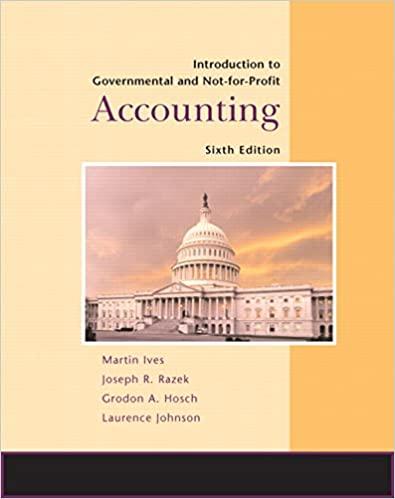Knockoffs Unlimited, a nationwide distributor of low-cost imitation designer necklaces, has an exclusive franchise on the distribution of the necklaces, and sales have grown so rapidly over the past few years that it has become necessary to add new members to the management team. To date, the company's budgeting practices have been inferior, and at times the company has experienced a cash shortage. You have been given responsibility for all planning and budgeting. Your first assignment is to prepare a master budget for the next three months, starting April 1. You are eager to make a favourable impression on the president and have assembled the information below. The necklaces are sold to retailers for $10 each. Recent and forecast sales in units are as follows: January (actual) 20.000 50,000 February (actual 26.000 Match actual) 40,000 April 65.000 May 100.000 June July 30.000 23.00 September 25.000 The large buildup in sales before and during May is due to Mother's Day. Ending inventories should be equal to 40% of the next month's sales in units. The necklaces cost the company S4 each. Purchases are paid for as follows: 50% in the month of purchase and the remaining 50% in the following month. All sales are on credit, with no discount, and payable within 15 days. The company has found, however, that only 20% of a month's sales are collected by month-end. An additional 70% is collected in the following month, and the remaining 10% is collected in the second month following sale. Bad debts have been negligible. The company's monthly selling and administrative expenses are given below: 4% of sales Variable Sales commissions Fixed Advertising Rem Wages and salanes Ubilities Insurance Depreciation S200,000 18.000 106,000 7.000 DOO 14,000 All selling and administrative expenses are paid during the month, in cash, with the exception of depreciation and insurance. Insurance is paid on an annual basis, in November of each year. The company plans to purchase S16,000 in new equipment during May and $40,000 in new equipment during June; both purchases will be paid in cash. The company declares dividends of $15,000 each quarter, payable in the first month of the following quarter. The company's balance sheet at March 31 is given month-end. An additional 70% is collected in TOllowing month, and the remaining 10% is collected in the second month following sale. Bad debts have been negligible. The company's monthly selling and administrative expenses are given below: Variable Sales commis% of sales Fixed Advertising Rent Wares and salaries Utilities Insurance Dereciation $200,000 18.000 106.000 7,000 3.000 14,000 All selling and administrative expenses are paid during the month, in cash, with the exception of depreciation and insurance. Insurance is paid on an annual basis, in November of each year. The company plans to purchase $16,000 in new equipment during May and $40,000 in new equipment during June; both purchases will be paid in cash. The company declares dividends of $15,000 each quarter, payable in the first month of the following quarter. The company's balance sheet at March 31 is given below: Assets Cab 346,000 104.000 21.000 950.00 51,495.000 S100.00 15.000 500.000 ANO S1495.000 - Accounts receivable ($26,000 Pebruary ale $20,000 March sales) ventory Prepaid intuner Fixed set of depreciation Total sets Liabilities and ShareholdersTquity Accounts payable Dividende Commons Retained earnings Totallaties and shareholders The company wants a minimum ending cash balance each month of $50,000. All borrowing is done at the beginning of the month, with any repayments made at the end of the month. The interest rate on these loans is 1% per month and must be paid at the end of each month based on the outstanding loan balance for that month. Required: Prepare a master budget for the three-month period ending June 30. Include the following detailed budgets: 1. A sales budget by month and in total 2. A schedule of expected cash collections from sales, by month and in total. 3. A merchandise purchases budget in units and in dollars. Show the budget by month and in total. 4. A schedule of expected cash disbursements for merchandise purchases, by month and in total








